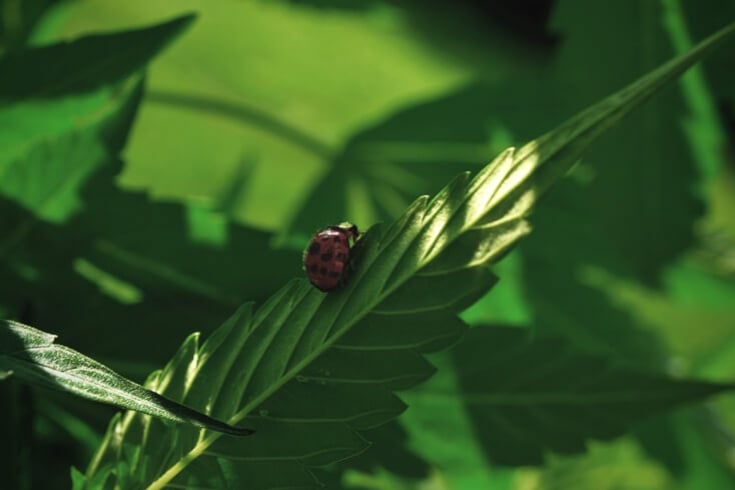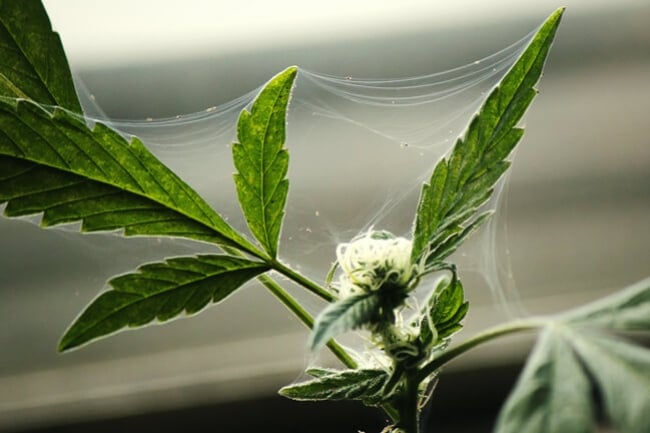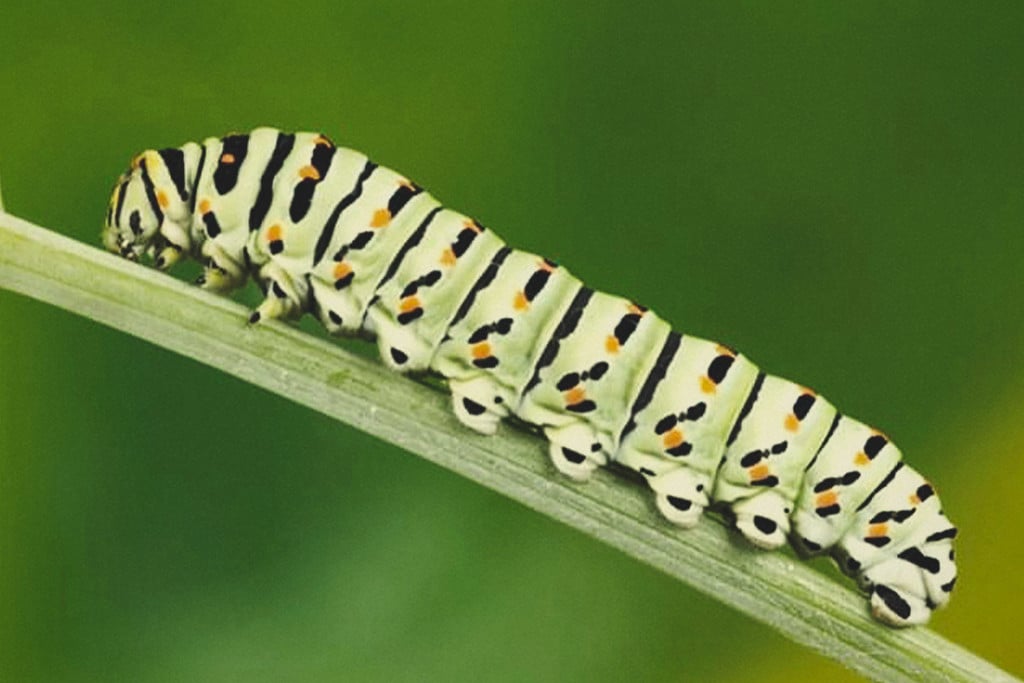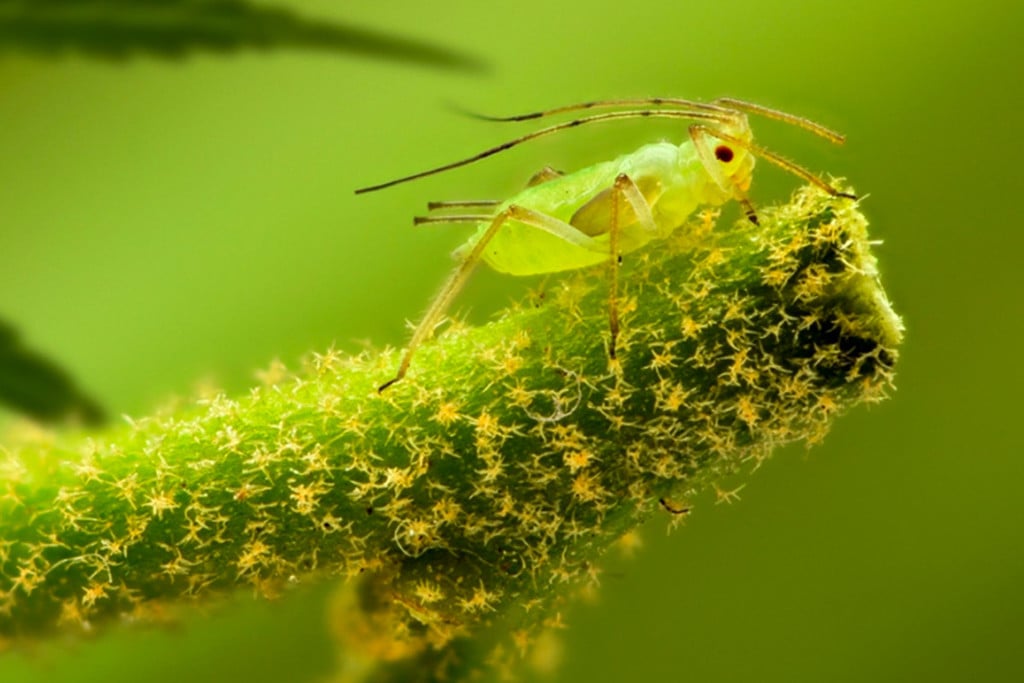.
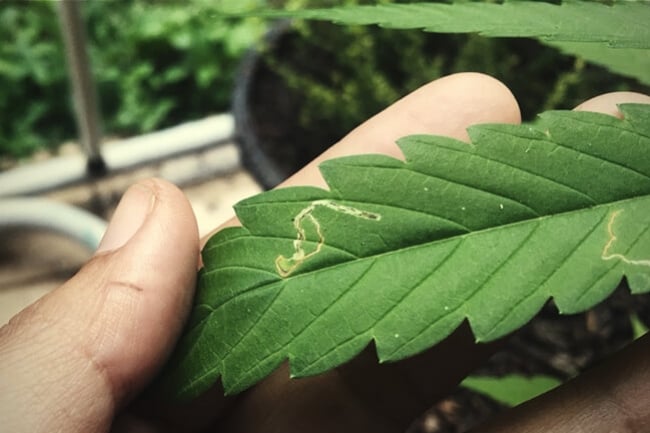
How To Identify, Prevent And Treat Leaf Miner Invasions
Do your cannabis fan leaves look a little odd? Have you noticed weird white squiggles appearing? This is the signature symptom of tunnelling leaf miners. Use our tips to stop these critters doing any more damage to your cannabis plants. Then, employ the preventative methods to put a stop to any future attacks.
Learn how to defend your cannabis plants from leaf miners.
Contents:
Humans have many uses for cannabis; it serves as industrial crop, a source of psychoactive cannabinoids, and everything in between. But we’re not the only species that has taken a liking to the versatile herb. Many insect species are drawn to cannabis as it serves as a succulent snack.
Cannabis growers encounter a wide variety of insects in their gardens. Some of these critters are considerably hard to spot, whereas others—including leaf miners—leave obvious telltale signs in their wake. Continue reading to learn a thing or two about leaf miner biology, how they damage cannabis plants, and how to prevent and counter invasions.
What Are Leaf Miners?
As their name suggests, leaf miners tunnel into the tissue of leaves. They chew their way through vegetation, leaving a visible feeding tunnel behind them.
Leaf miners are the larval stage of numerous species of insects, including many moths, sawflies, wasps and beetles. Each of these species goes through four major phases of the life cycle: egg, larvae, pupae and adult. It’s during the hungry larval stage where they inflict damage through mining leaves.
Leaf miners selectively target tissue within leaves, as opposed to munching on the surface, for several reasons. Firstly, chomping through the inside of a leaf fills their bellies and creates a safe haven and a place to hide from predators. Secondly, they specifically target juicier tissue with less cellulose—a fibrous structural component within plant tissue.
Very effective for larvae, this survival mechanism takes a heavy toll on plants. An aggressive leaf miner invasion can cause significant damage to leaves and affect plant growth and yield. Before we delve into ways to manage these munchers, it’s worth learning how they spread and what signs to keep an eye out for.

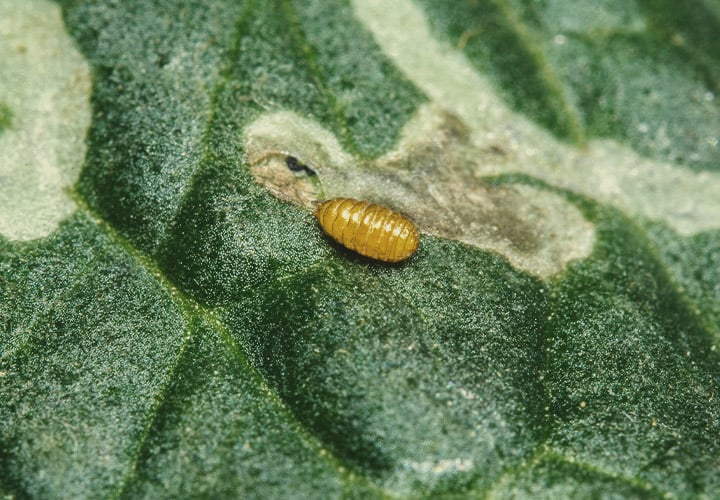
How Do Leaf Miners Spread?
Leaf miners start their lives as eggs, laid by female insects. Upon hatching, the young larvae start boring tunnels in leaves as they satiate their hunger. Eventually—if they survive the throes of early life—the larvae morph into pupae and eventually into an adult insect.
When a male and female wasp, beetle, moth or sawfly mate, they contribute genetic components to the next wave of leaf miner eggs. Although all of these species play important roles in the ecosystem, the key to preventing leaf miner damage lies in disrupting this reproductive cycle.

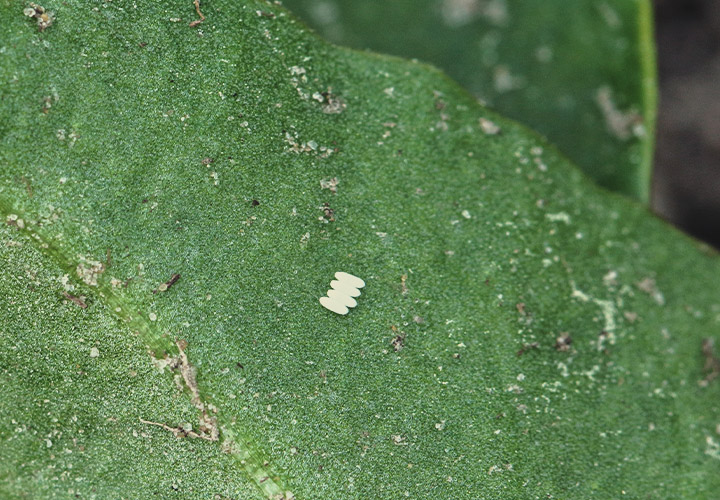
What does Leaf Miner Damage Look Like?
Leaf miner tunnels look like white wining brushstrokes over a luscious green canvas. These trails spiral, turn, and twist through the interior of the leaf, leaving visible markings on the surface. At first glance, these markings appear worm-like, leading many gardeners to lay the blame on some sort of parasite. In reality, they are actually the telltale sign of a much smaller organism.
How to Treat a Leaf Miner Invasion
After spotting the obvious presence of leaf miners, you need to take action before these hungry fellows cause any more damage. Cannabis growers have a range of options at their disposal when dealing with these pests. Of course you can reach for a bottle of a chemical pesticide to put an immediate halt to the advance. Although effective, pesticides can leave residue on flowers and cause environmental damage in the garden and beyond.
Organic methods enable growers to tackle issues while preserving the delicate balance of their garden's ecosystem and keeping their prized flowers free of contaminants. Check out a few of the most effective organic methods of dealing with leaf miners below.
Beneficial Predators
Every stage of the leaf miner life cycle slots somewhere into the soil food web. Just as leaf miners can’t resist wrapping their mouthparts around your cannabis leaves, other insect species feel the same way about these troublesome tunnelers.
By introducing predatory insects into your garden, you’ll keep leaf miner numbers down while enhancing biodiversity. After these insects complete their job, they’ll serve as food for another organism and will help to fuel the soil food web. As one of the most effective predatory insects against leaf miners, the parasitic wasp Diglyphus isaea makes quick work out of many species of these ravenous pests. These wasps patrol the surface of leaves, locate tunnelling leaf miners and puncture them with a paralysing sting.
Once immobilised, these ectoparasites then lay their eggs on the stunned prey. After the larvae hatch, they attack the unfortunate leaf miner and feast on their insides. It’s gruesome, yet highly effective—as are the ways of nature.
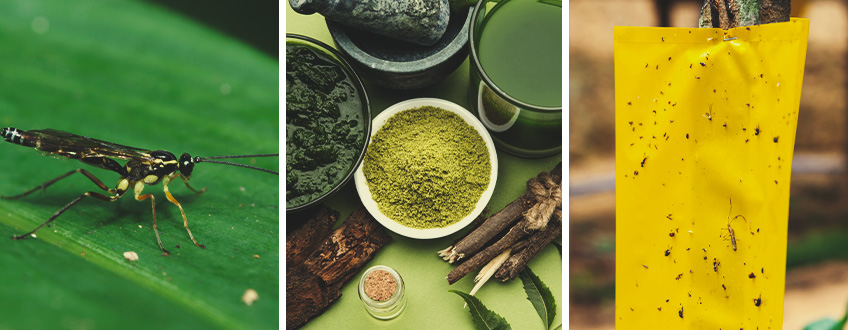
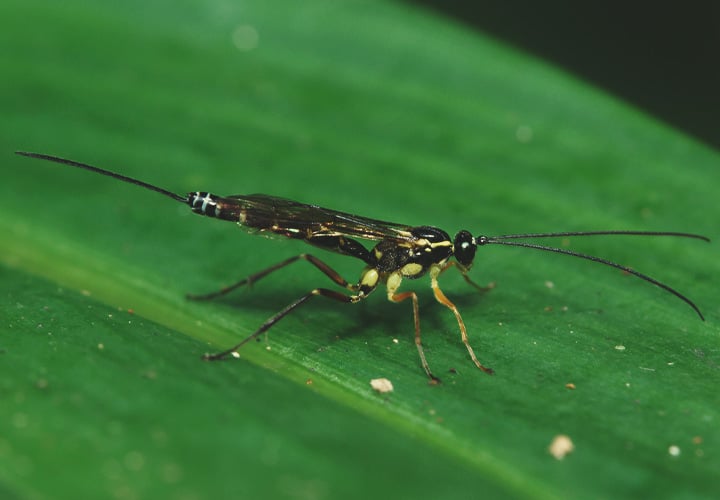
Neem Oil
You’ll find a bottle of neem oil in greenhouses and grow rooms of most organic growers. Pressed from the fruits and seeds of an evergreen tree native to Indian subcontinent, neem oil contains several triterpenoid compounds that counter numerous insect and fungal species. Referred to as an organic pesticide, neem oil manages to deter pests such as leaf miners, while leaving beneficial species such as ladybugs and worms unharmed. The oil will rid your leaves of leaf miners after only a few applications.

Mix one teaspoon of neem oil per litre of warm water inside a mister. Add five drops of surfactant to allow the oil and water to mix. Shake the mister and cover the fan leaves of every affected plant. Neem oil works wonders against certain pests, but it does have some downsides. The oil can linger for some time and add an unpleasant taste. Only use this preparation during the vegetative phase, before the flowers start to bloom.
Sticky Traps
Sticky traps target leaf miner species in their adult stage. Place these sticky patches on the surface of the soil beneath your plants. Then use zip ties to hang a few up in the canopy. Adult leaf miners cannot resist the bright colors of these curious platforms. The sticky substance on the surface glues the pest to the trap. Frequently visit each site and remove traps when they become overloaded.
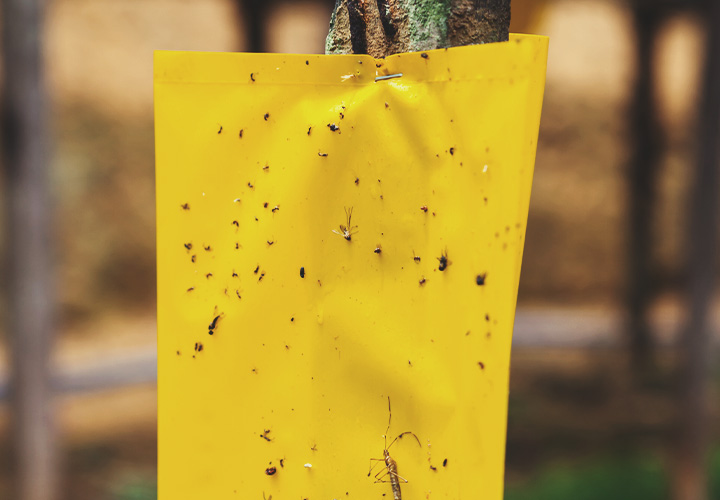
How to Prevent Leaf Miners
Stopping leaf miners from feeding on your plants in the first place will save you a lot of time and effort. The treatment measures above certainly work, but preventing an attack will allow you to keep growing in peace and avoid the hassle and worry. Use the methods mentioned below to prevent leaf miners from ever tasting the insides of your cannabis plants.
Row Covers
Mesh row covers provide a solid line of defense against leaf miner adults. These protective layers allow adequate light and airflow while still being small enough to block flies and moths from gaining entry to lay eggs. Row covers work well both indoors and outdoors. Just make sure to frequently check for any openings along the bottom of the cover where leaf miner species can sneak in, especially after strong winds.
Regular Observation
Regularly strolling through your grow room or garden to check for symptoms of invasions and disease will help you contain problems before they become major outbreaks. Go and check on your plants once each day. Look for changes in fan leaves and keep an eye out for those signature white trails.
If you find even the slightest sign of leaf miners, remove the affected leaves from the grow space. You might just prevent significant damage through an almost effortless act.
Prevent First, Treat Later
The key to protecting your cannabis crop from leaf miners lies in prevention. If you’ve experienced an attack before—or you’ve received accounts from local growers—erect row covers just in case.
If you happen to be halfway through the growing season and have just discovered those dreaded white trials, try the treatment methods above as soon as possible. You’ll be back on track in no time at all!















































